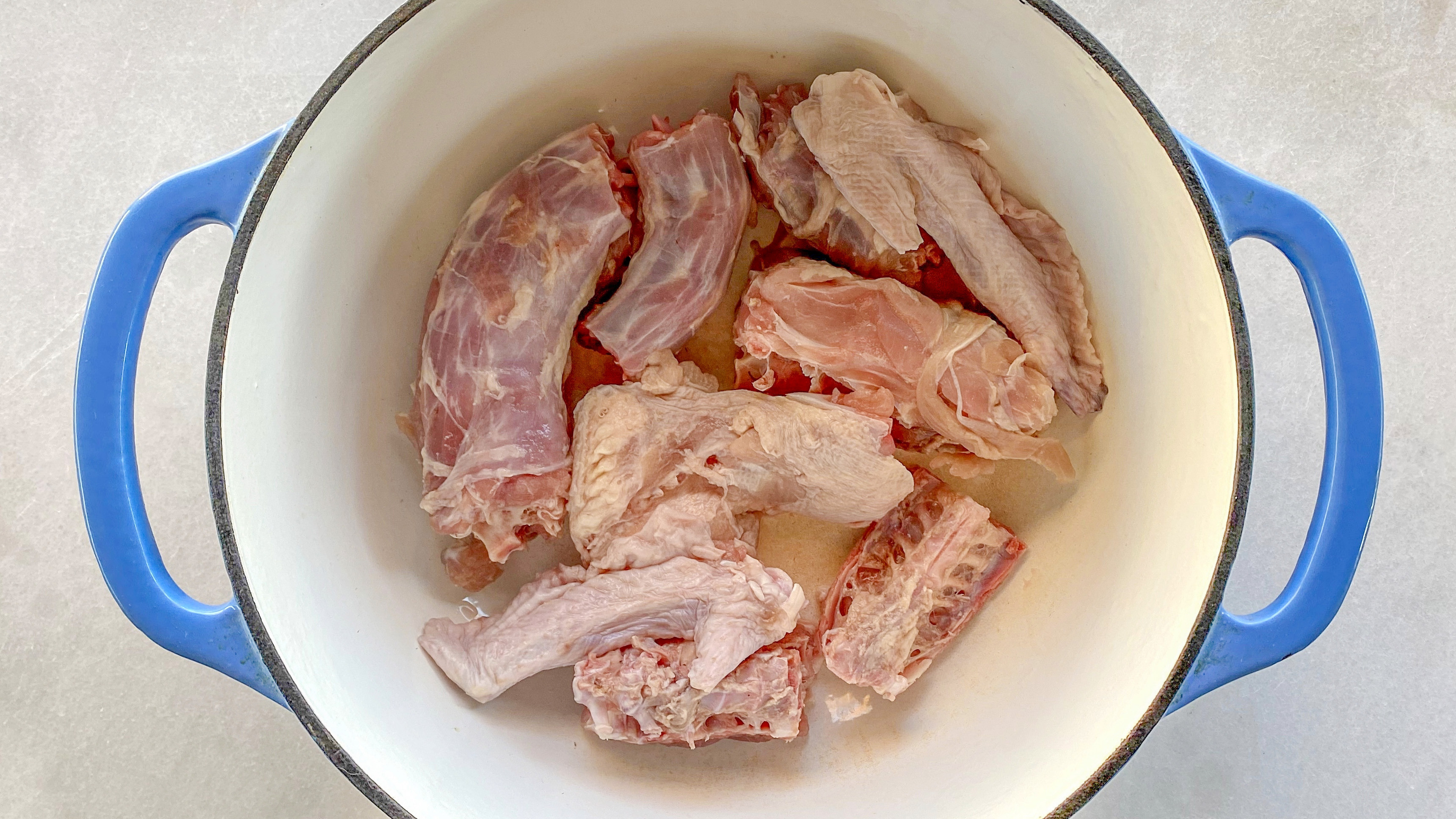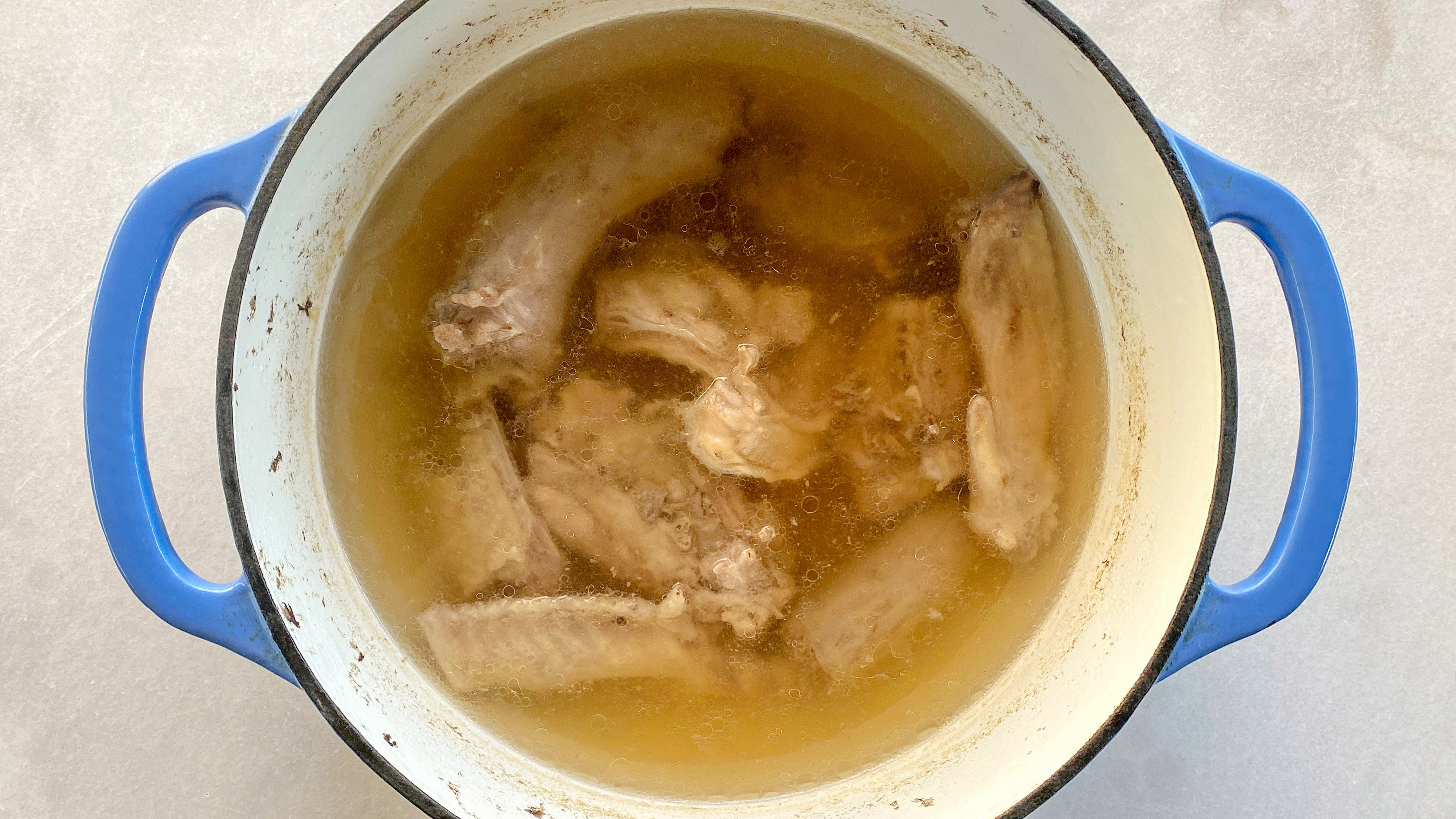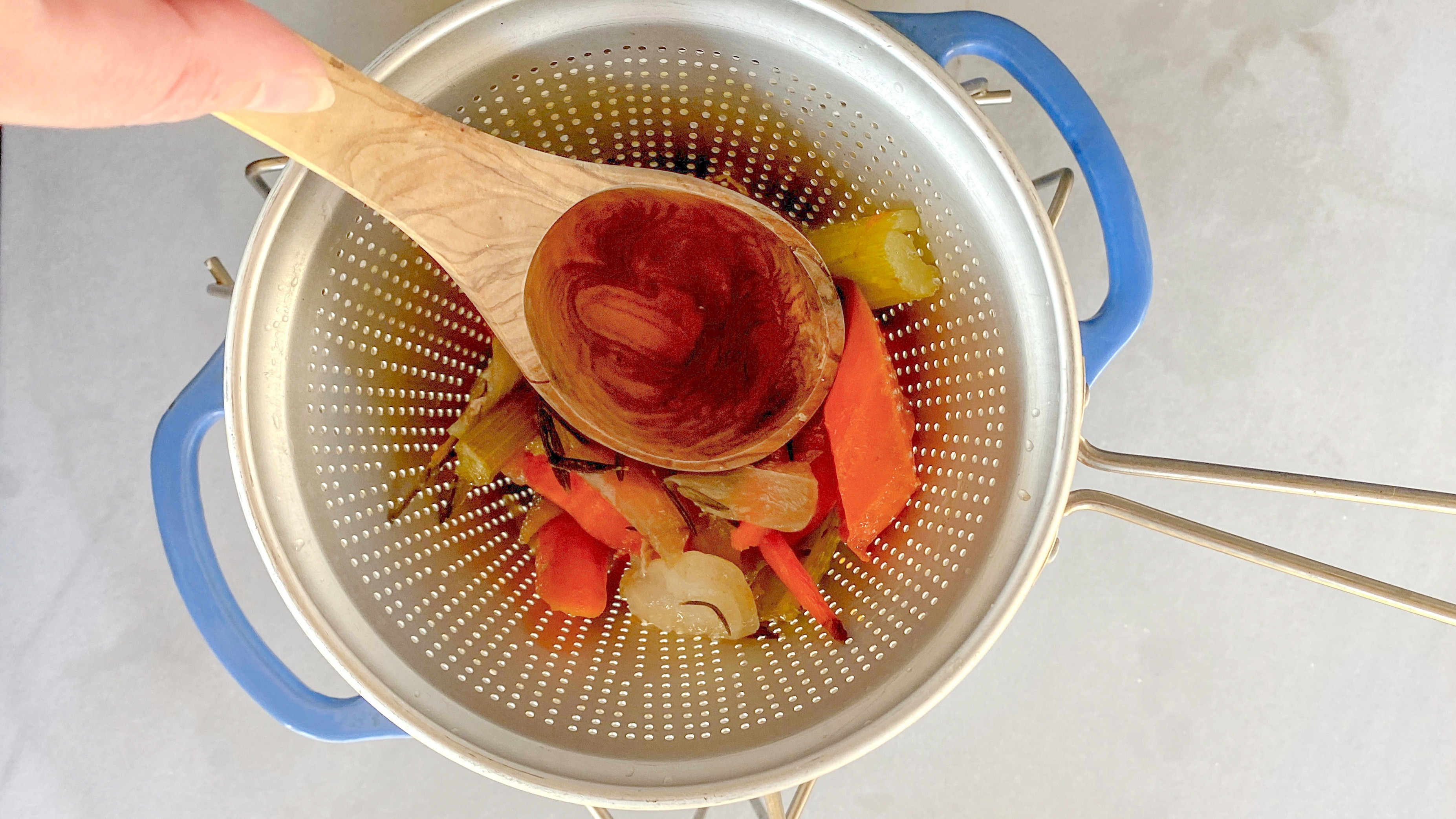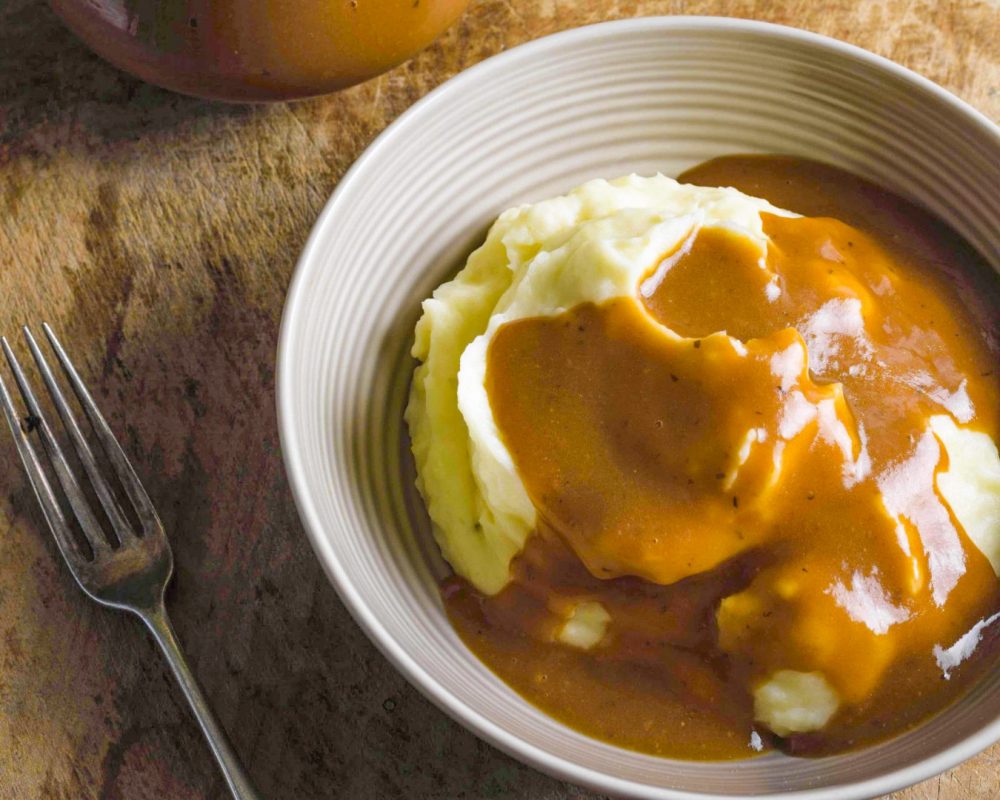Gravy Is the Most Important Thing on Your Thanksgiving Table

The best turkey is a spatchcocked turkey—a turkey with its backbone removed. Spatchcocking lets you to flatten the bird, for a faster roasting time, while cooking the legs and thighs to sumptuous perfection, without drying out the breast.
If the idea of butchery makes you anxious, take a breath: You can watch Chris Kimball demonstrate this technique on Instagram, and you can follow along with our spatchcocking guide. Once you feel confident in your butchery skills, check out Chris' recipe for spatchcocked Two-Hour turkey.
Spatchcocking, coupled with roasting the turkey on a bed of vegetables, leaves you with two key gravy ingredients: a meaty, collagen-packed backbone for making stock, and deeply flavorful aromatic pan drippings.

After you’ve removed the back bone, chop it up into pieces with a cleaver and toss it in a pot, along with the neck and wing tips, which are also packed with collagen and will give your gravy a silky texture. Add enough water to cover the bones by an inch or so, then let everything simmer away while the turkey roasts, skimming off any coagulated bits with a spoon, until the stock takes on a transparent, golden hue.
Enhance with pan drippings

While you can technically make gravy without pan juices and drippings, I wouldn’t advise it, especially when the pan drippings are as delicious as ours. “You use the drippings from the turkey, but it also has the carrots, and the celery, and the rosemary,” explains Chris. “It has a lot of things going on, and it’s absolutely delicious.”
Place a strainer or chinois over a bowl and scrape in the juices, drippings and vegetables. Press down on the vegetables with a ladle—its rounded shape helps you get into the curves of your chinois, so you don’t miss out on a single drop of flavor.
Remove the bones from the stock pot and add the strained pan juices to the stock. Let it all reduce down to three or four cups. Season to taste with salt, or supercharge the flavor with a bit of Better Than Bouillon—a concentrated bouillon paste—to make what Chris calls “double stock.” Pour the stock through a fine mesh sieve or strainer lined with cheesecloth, to catch any little bits of meat or vegetable, then get ready to thicken.
Good gravy is silky, not gloopy
Gravy should cascade down your turkey and potatoes in a silky stream, without congealing into a jiggly blob. To turn your concentrated, flavorful base into outstanding gravy, you need a little cornstarch, but not too much.
Gravy is traditionally thickened with a slurry of four tablespoons of cornstarch in 1/2 cup water for four cups of stock. Chris uses half of that slurry mixture—two tablespoons cornstarch in 1/4 cup of water—for a thinner gravy. “I think it actually has more flavor,” he said.
Mix the cornstarch and water to create the slurry, to prevent any lumps, then pour it into your simmering stock, whisking to incorporate. The gravy will look excessively thin in the pot, but will thicken when it’s removed from the heat. To get an idea of how it will act on the plate, drizzle a spoonful of gravy onto a room-temperature dish. If it’s still a little thin for your liking, you can simmer it a little longer. Once it’s right where you want it, get it into a gravy boat and on the table, so that the gobbling may proceed.
Need more Turkey Day inspiration? Check out our full menu here; Learn the many ways Milk Street makes mashed potatoes; Read the favorite Thanksgiving moments of 22 chefs and food writers; And watch Rosie Gill make no-oven Brussels sprouts.
Join the conversation on Facebook, Instagram, TikTok and Pinterest.
And if you're looking for more Milk Street, check out our livestream cooking classes with our favorite chefs, home cooks and friends for global recipes, cooking methods and more.




